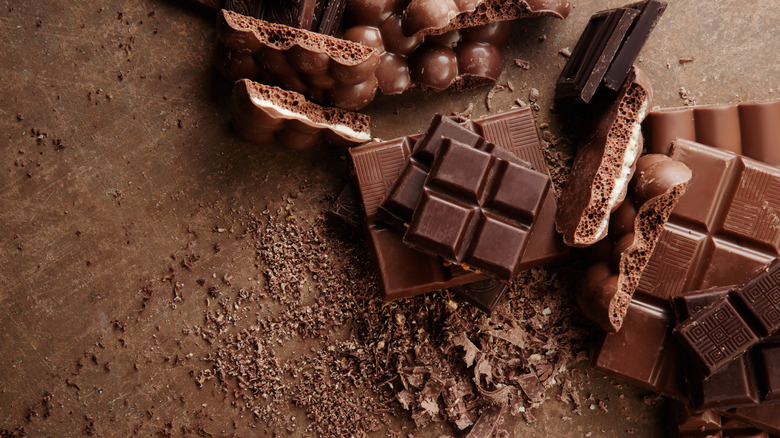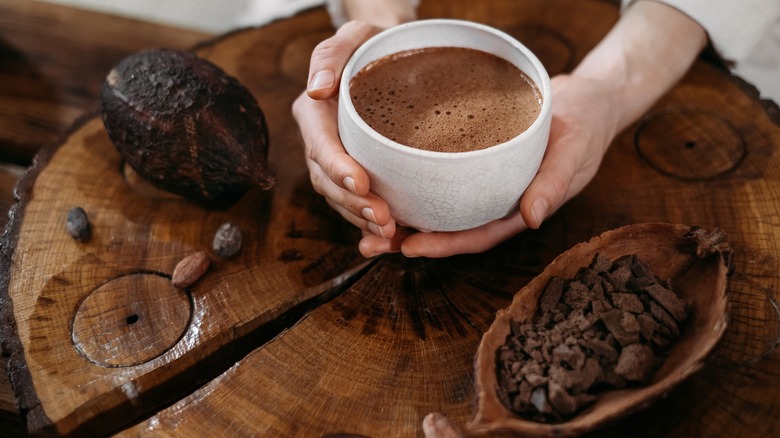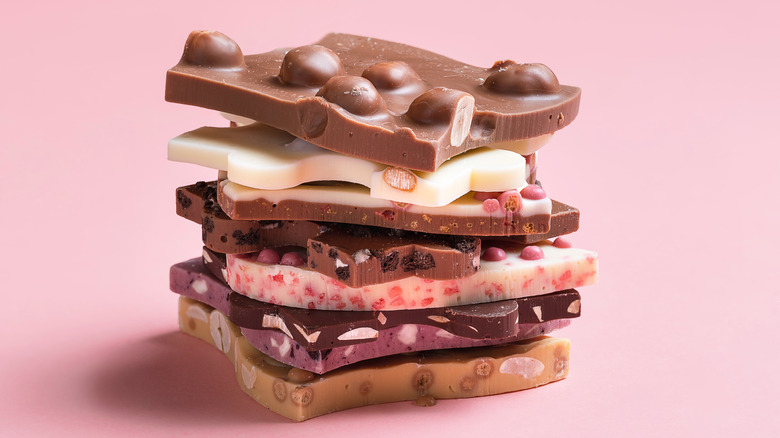What Does Bean To Bar Mean When Buying Chocolate?
Chocolate comes in many shapes, sizes, and varieties, each with their own unique set of characteristics. Ultra dark chocolate is more bitter than sweet, while white chocolate is technically not even considered chocolate, per McGill. When you step into the store and are picking out your favorite chocolate candy bar or chocolate-covered whatever-you-like, chances are you're not thinking about how that chocolate was made. However, the chocolate you use to make up your favorite homemade chocolate pie or chocolate cookies is likely to have a totally different history than an ethically sourced, locally produced bar of dark chocolate for nibbling.
Maybe you've come across the term "bean to bar" on your recent chocolate run, and if you're not familiar with the process of making chocolate, it could leave you a little confused. So what does "bean to bar" mean, and why do some chocolate products get the label while others don't?
Bean to bar means chocolate from scratch
Let's start with the two major types of chocolate producers: chocolatiers and chocolate makers. According to Mission Chocolate, the two processes are completely different and so are the outcomes. Chocolatiers, also called confectioners or candy makers, take already-made chocolate and melt it down into their own creations. A chocolate maker, on the other hand, creates the chocolate from scratch, from cacao beans which are roasted and ground up then mixed with other ingredients like sugar and cocoa butter. "Bean to bar" is a way to differentiate chocolatiers from chocolate makers; a bean to bar producer is a much smaller operation, often producing just a few hundred bars at a time, per Bar and Cocoa. Think of it as the chocolate world's equivalent of farm-to-table.
And did you know that the chocolate you get in the United States is different from the chocolate you buy in Europe and other countries, whether it's bean to bar or mass produced? According to Gourmet Boutique, that's because the cacao used originates in different countries, but the mix is also unique in each region. European chocolate typically comes from cacao beans grown in Western Africa, whereas American chocolate is usually grown in South America. European chocolate also tends to contain higher levels of fat and more cocoa butter than its American counterpart. There's a reason you might have heard that European chocolate is superior to American — it's actually different!
Types of bean-to-bar chocolate
Whether your bar comes from Switzerland or South America, all chocolate is made with cacao, or cocoa, in some amount. The world of chocolate is as diverse as the places it comes from, ranging from the darkest chocolate to white and even ruby, per Read Cacao. The main categories of chocolate are dark, milk, and white, and within each there is some range. Dark chocolate is the most bitter and contains between 65% and 99% cocoa. Dark chocolate that contains no sugar or ingredients other than cocoa is called "100% chocolate" (makes sense) and technically falls outside the category of dark, because it's so bitter you likely won't want to eat it alone. Milk chocolate is 35–55% cocoa, and white chocolate contains no cocoa but it contains cocoa butter, the fatty part of the cocoa bean. Perhaps the most unique is ruby chocolate, which is technically white chocolate that has been specially fermented, giving it a pinkish color and unique taste.
All categories of chocolate can be "bean to bar"; it really boils down to the producer. Hershey's, for example, is obviously not going to fall under that category, but smaller brands like Raaka or Dandelion are small producers so they proudly call themselves bean-to-bar brands. Whatever your tastebuds draw you to, there's going to be a range of bean to bar and mass-produced chocolate in whatever form you like best.


